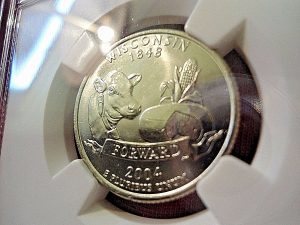
Get free mulch. Accepting free loads of wood chips from local tree trimmers is an easy way to save money on gardening, says Kate Russell of the Daily Garden. Mulch protects the soil, feeds plants and looks nice, but it can cost about $15 to $65 per cubic yard. Instead of shelling out the money, take advantage of the fact that many tree trimmers will drop off a free load to avoid the fees that most municipalities charge them to dispose of removed trees and branches at local landfills or recycle centers. “All you have to do is leave your name and number with a local tree trimmer and make your driveway available when they have a load,” Russell says.
Join a Buy Nothing group. The Buy Nothing Project was created so that people could give items to others in their communities — and everything is free. “Before buying something new, see if someone in your area may be giving an item away,” says Julianna Poplin of the Simplicity Habit. Find your nearest group on the Buy Nothing Project app or by searching Facebook groups.
Schedule a no-spend day. “Don’t use cash. Don’t use your credit card. Don’t put your hands in your pocket for anything at all” for a full day, says Andrew Gonzales, president at businessloans.com. Once you get used to not spending money for a day, try doing it twice a month, once a week or even for an entire week. “If you’re prone to impulse purchasing, this is a great way to hit the financial reset button,” Gonzales says. “It gives you more control over where your money is going and makes you more conscious of what you buy when your no-spend day is over.”
Shop frozen foods. “Frozen seafood is usually less expensive than fresh, and there’s no rush to cook it,” says Jenna Helwig, food director at Real Simple magazine. “Frozen berries last a lot longer than fresh, but they’re just as nutritious and perfect for smoothies. You can save $2 on 10 ounces of frozen raspberries compared to fresh ones,” she adds. “And you’d have to buy several bunches of fresh spinach to equal as much as in a box of frozen.”
Cut salon costs. Find out whether your salon offers discounted prices for hair cuts, color and other services when training new stylists. Some designate a day/time of the week or month or post dates on social media. “And, if you live close to a beauty academy or cosmetology school, you may be able to score services at a highly discounted rate,” says Susan Jones, a senior wealth manager at Plancorp. “For example, Boca Beauty Academy [in Florida] … offers a hair cut and color starting at just about $30, well below the going rate of $150 or more at other salons in the area.”
Buy discounted gift cards. It’s rare to find a discount on gift cards. But when you do, it’s an opportunity to stretch your budget, says Bryan K. Chavez, national deals editor at Living on the Cheap. Only purchase the cards for retailers you already frequent, though; buying every discounted card you find will negate any savings. Although Chavez finds most of his discounted cards online at sites such as PayPal and Newegg, he has also taken advantage of grocery store promotions and direct offers from retailers and restaurants.
You may also find gift cards at stores such as Costco or Sam’s Club, where discounts vary from about 5 to 25 percent. “Part of my strategy is to set aside money every month for use in December, when gift card discounts are the most abundant,” Chavez says. “Every year, it gives me around $600 for a gift card shopping spree. To me, it’s just like I’m prepaying for goods and services for the following year at my favorite places to eat and shop, but at a discount. With this plan, I’m able to make a ‘profit’ of about $150 every year.”
Use it or lose it. It can be hard to keep track of recurring payments, especially if you use autopay. Make a list of your subscriptions, such as streaming services, gym memberships and meal kits, says Erin Ellis, a financial counselor at Philadelphia Federal Credit Union. “Go through each one listed, and if you haven’t used it in a month, cancel it,” she says. “Removing these unneeded expenses can build into big savings.”
Shop second hand. Check thrift stores, yard sales and online marketplaces for deals on used furniture, clothing, toys, gifts and home decor. Jane Topolovec-Vranic of Sustain My Craft Habit, a DIY and decor blog, found two nearly full cans of designer-brand paint on Facebook Marketplace for just $20, which she used on an accent wall in her bedroom. And rather than buying faux leather at more than $20 per yard for a craft project, she snagged a men’s leather jacket at a thrift store for $4. Once deconstructed, it provided more than ½ yard of genuine leather. “Look for items that are in new or good condition, and set a budget in advance, so you don’t overspend,” she says.
Grow your own herbs. “Why pay $5 for three sprigs of rosemary when you can have fresh herbs all year long?” says professional gardener Jen McDonald, founder of Garden Girls, a design firm in Houston. Parsley, sage, chives, thyme, rosemary and oregano are easy to grow year-round in a sunlit window, and they yield a bountiful harvest. A pot, soil and starter plants will run about $20.
Reduce energy use. Utility bills are another place you can cut costs by making simple changes at home. A microwave uses as much as 80 percent less energy than the oven, for example. Or a toaster oven typically draws 33 to 50 percent less energy than a conventional one. According to the Energy Department, washing dishes by hand costs about $40 more each year than running a fully loaded dishwasher. By replacing your home’s five most frequently used light fixtures or bulbs with Energy Star-certified products, you can save up to $75 each year. And if you plug your electronic devices into a power strip, then turn it off when not in use, you can knock off up to another $100 annually.
Dive into drugstore skin care. If you shop at beauty stores such as Sephora or Ulta, give the beauty sections at other stores — Walgreens, CVS, Walmart, Target — a shot. Heather Muir, beauty director at Real Simple, says that although the packaging might not look as luxe, brands such as Olay, owned by P&G, have huge budgets for research and development, so their ingredients and technology are as good as — or better than — the expensive brands’. For example, instead of a pricey moisturizer, try Olay or CeraVe. “In addition to saving money, you might be pleasantly surprised, as some work even better at a way cheaper price point,” she says.
Slow down. Tire friction and air resistance mean that speeding increases fuel consumption. Although automobiles achieve ideal fuel economy at various speeds, gas mileage often declines dramatically at speeds of more than 50 mph, says Will Gogolak, an assistant teaching professor in finance at Carnegie Mellon University’s Heinz College. “It’s well-cited that every 5 miles per hour beyond 50 miles per hour is equivalent to paying 7 to 10 percent more per gallon of gas, or about 27 cents based on national average gas prices of [about] $4 per gallon.”
Denver-based writer Laura Daily specializes in consumer advocacy and travel strategies. Find her at dailywriter.net.




